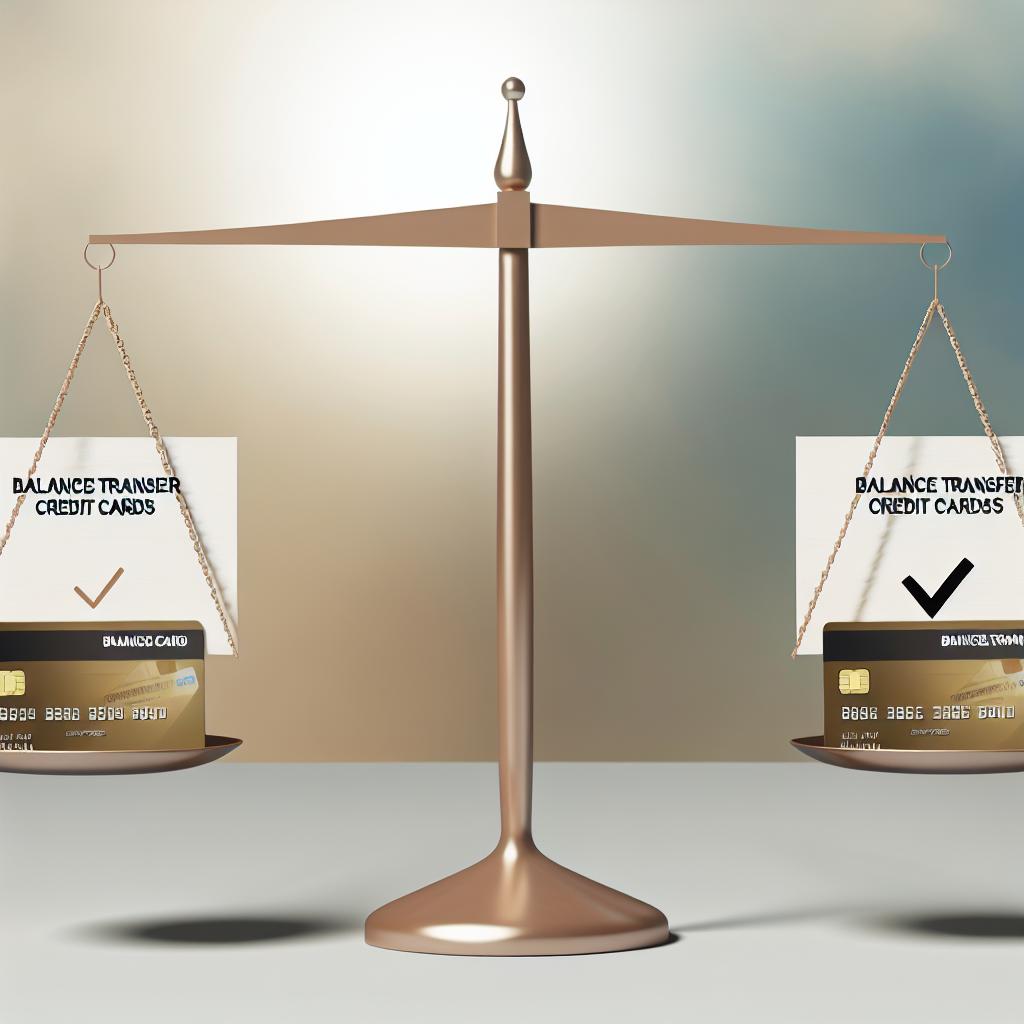Understanding Balance Transfer Credit Cards
Balance transfer credit cards serve as a financial tool designed to help individuals manage their existing credit card debt more effectively. By shifting the balance from one or more credit cards to a new card that offers a lower interest rate, consumers have the opportunity to save money on interest payments and accelerate the debt payoff process. Despite the clear advantages these cards present, there are some potential drawbacks that one should consider before taking such a step.
Benefits of Balance Transfer Credit Cards
Lower Interest Rates: One undeniable advantage of balance transfer credit cards is their offer of lower interest rates, frequently starting at an introductory 0% Annual Percentage Rate (APR) for a specified period. This directly translates into substantial reductions in the amount of interest money paid over time. Consequently, a greater portion of each monthly payment can be allocated to reducing the principal balance, potentially speeding up the entire debt repayment timeline.
Consolidation of Debt: Another attractive feature is the ability to consolidate multiple debts into a single monthly payment. Transferring outstanding balances from several cards to one card simplifies debt management. This consolidation creates an easier framework for keeping track of payment due dates and total amounts owed, which lowers the likelihood of missing a payment—an outcome that can result in additional fees and increased interest rates.
Potential for Savings: The combination of lower interest rates, potential for interest-free periods, and the consolidation of debts can offer significant savings over the introductory period. If an individual refrains from making new charges, it often enables them to pay down their debt more rapidly.
Drawbacks of Balance Transfer Credit Cards
Balance Transfer Fees: Despite the appeal of initial interest savings, most credit cards impose a balance transfer fee, generally ranging from 3% to 5% of the amount transferred. This fee can reduce or negate some of the anticipated savings, making it critical to calculate whether the potential savings truly outweigh the costs before committing to this option.
Limited Introductory Period: The enticing lower interest rates are usually promotional and apply for only a limited time, often between 12 to 18 months. Once this period expires, the interest rate could increase considerably, leading to higher costs if the balance has not been entirely paid off by that time. Therefore, consumers must have a realistic plan to pay down their debt within that introductory timeframe.
Potential Impact on Credit Score: Opening a new credit card can affect one’s credit score in several ways. First, the hard inquiry made by the credit card issuer can slightly reduce the credit score. Additionally, the introduction of a new account might decrease the average age of accounts, which is another factor considered in credit scoring. There is also the potential temptation to rack up further debt on the existing cards now that their balances are cleared, which can negatively affect one’s credit utilization ratio and overall financial health.
Considerations Before Applying
Before deciding to apply for a balance transfer credit card, it is essential for consumers to evaluate both the benefits and potential drawbacks. A thorough review of the terms and conditions of the card is necessary, with particular attention paid to the length of the introductory period, the standard APR that will apply once this period concludes, and any additional fees the card may impose.
This debt management strategy is most effective for individuals who are determined and disciplined enough to actively reduce their debt without incurring additional charges. Accountable financial behavior is fundamental in ensuring that a balance transfer credit card functions as a beneficial instrument in achieving financial objectives rather than as a temporary solution that leads to more challenges in the long term.
For those in search of more comprehensive information about balance transfer tactics, exploring resources from consumer finance agencies or speaking with a financial advisor can provide valuable insights and guidance on making informed decisions.
Furthermore, prospective applicants should assess their current financial situation and ask themselves key questions. Are they committed to using the card exclusively for balance transfers and not for new purchases? Do they have a plan in place for dealing with the debt once the promotional period ends and the regular interest rate kicks in? Are they aware of their overall financial health, including their current credit score and credit utilization rate?
By addressing these considerations, individuals can ensure that they take full advantage of the offers available with balance transfer credit cards, while also safeguarding against potential pitfalls. It’s a delicate balance between seizing the opportunity for financial savings and maintaining vigilant oversight over one’s broader financial picture.
Lastly, consumers should remember that while balance transfer cards can indeed be a useful tool in the financial toolkit, they require mindfulness and dedication to ensure they aid in long-term financial stability. Making smart choices now can lead to more significant financial freedom and security in the future.
